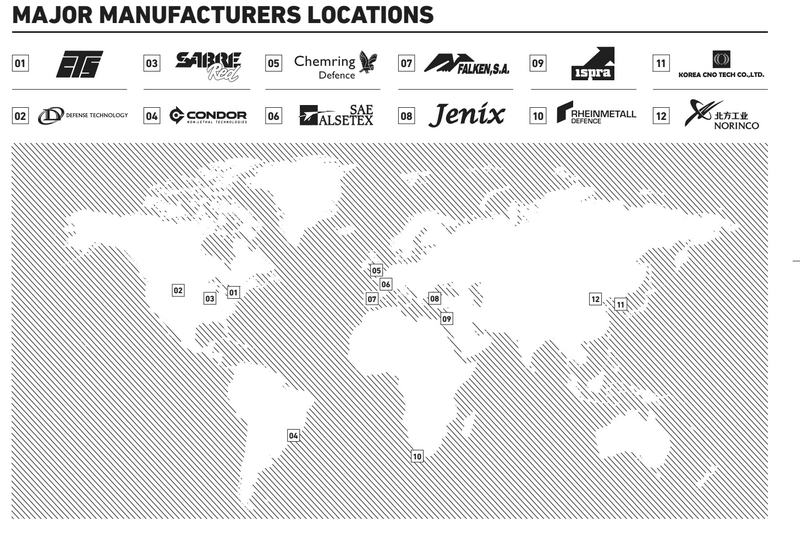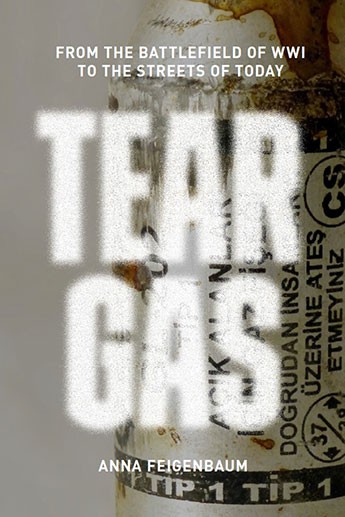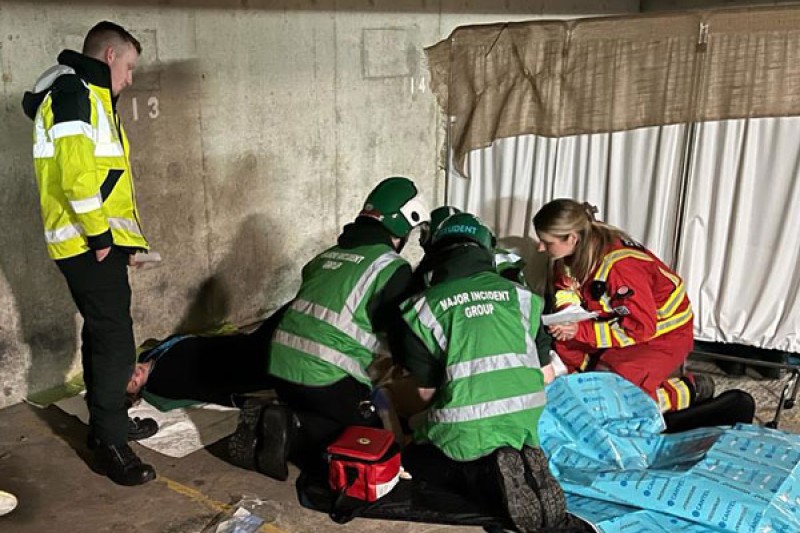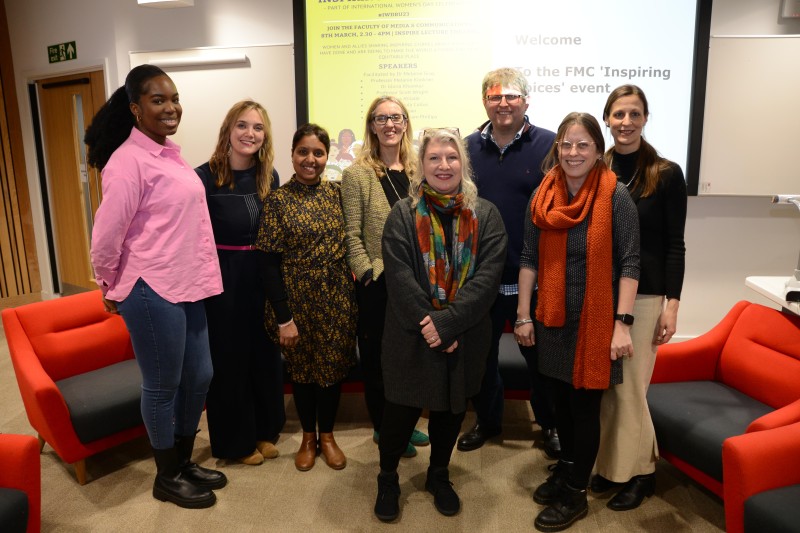Organisations such as the World Medical Association and NATO state that there is not enough information on the real-life effects of riot control weapons such as tear gas, water cannons and rubber bullets. This is despite their daily use and impact on civilians, including children, as captured by the world’s media.
Since 2013, Dr Anna Feigenbaum, Principal Academic in Digital Storytelling at Bournemouth University, has initiated a wealth of research into the real-world impact of these weapons. In particular, Dr Feigenbaum’s work has highlighted the lack of regulation in the industry and to date, has made a wide range of impacts around the world.
Global impacts
From influencing the European Council's Human Rights Commission to adopt new policy guidelines around the use of tear gas on protestors, through to informing the strategies of non-government organisations including Amnesty International, the outcomes of Dr Feigenbaum’s research have positively impacted both national and international audiences.
The most tangible of these outcomes is the creation of a publication, RIOTID, which has been used to train human rights monitors and field medics in how they record and monitor the use of riot control weapons. RIOTID has successfully made its way into a variety of practical contexts and was used during a Palestine community protest where participants carried the RIOTID guide as they marched.
Most recently, Dr Feigenbaum has collaborated with the team who produced RIOTID, the Omega Research Foundation, design agency Minute Works and BU’s Dr Isabella Rega, to educate A-level students (and the international equivalent) on the impact of riot control weapons. Funded by the United Nations Department of Drugs and Crime, the team has developed a UN board game, along with a lesson plan for teachers, to help demonstrate the consequences of tear gas use.
Patrick Wilcken
Amnesty International
Bournemouth University’s work on this area is crucial for furthering our understanding of the effects of tear gas, tracking its trade and combatting its use.
Empowering everyday civilians – the evolution of RIOTID
Beyond her work at Bournemouth University, Dr Feigenbaum has contributed to various exhibitions to bring to life the impact of the use of tear gas and other riot control weapons through expressive art forms. In particular, Dr Feigenbaum contributed towards the ‘Cruel Designs’ exhibition at Banksy’s Dismaland in Weston-super-Mare, a sinister twist on its Californian counterpart Disneyland.
Over 150,000 people flocked to witness Banksy’s latest pop-up creation. Collaborating with Dr Gavin Grindon from the University of Essex and Minute Works, Cruel Designs in its rawest form sought to exhibit things that were designed to stop human beings in their tracks – including tear gas. It was this contribution which inspired the birth of RIOTID.
RIOTID is a civic media project by The Tear Gas Research Connection, researchers at Bournemouth University (Dr Feigenbaum and Dr Isabella Rega) and Birmingham University, the Omega Research Foundation and Minute Works. Co-ordinated by Dr Feigenbaum, it ultimately seeks to provide everyday civilians who are caught up in incidents involving riot control weapons with a voice they previously wouldn’t have had – and to ensure that it is not only governments who are able to report what is happening on the ground.
Civilians are encouraged to identify riot control weapons and upload photographs to a dedicated Twitter account, @RiotID, using #RiotID, for future identification by a team of experts. The creation of the RiotID guide utilises pictograms and icons to illustrate tear gas safety information, manufacturer locations, weapon types and basic tips for would-be documentary photographers.
The layout also incorporates a ruler that can be used to determine cartridge and tear gas canister size. Since 2015, over 130 identifications of these weapons have been captured.
Dr Anna Feigenbaum
Principal Academic in Digital Storytelling
Every day, police officers use riot control weapons on civilians. The gap between how police are advised to use these weapons and how they are actually used is widening. We designed the RiotID guide to help close this gap.
RIOTID in action
As a result of teaching civilians how to recognise the branding, shape, product type and logos of different riot control weapons, these can quickly be traced back to their manufacturer. This in turn increases the visibility of global companies who profit from oppression and social control through the use of riot control items such as tear gas canisters.
The power of today’s digital channels, such as YouTube, and the speed at which information gets into the public domain, can help to gather evidence and hold governments and manufacturers accountable in the use of forceful violations.
Informing change
To date, Dr Feigenbaum’s research has been instrumental in seeking for the improvement and regulation of riot control weapons, such as tear gas, asking the fundamental question of, ‘How has it become normal to police societies with a poison?’.
In 2017, Dr Feigenbaum published Tear Gas: From the Battlefields of WW1 to the Streets of Today. Funded by a Wellcome Trust Medical Humanities Grant, her book is the first history of tear gas as a weapon, chronologically tracking the movement and rise of its use – from the trenches of World War One, to the streets of today.
Following its publication, Dr Feigenbaum embarked on a book tour across America, Canada and the UK and has taken part in over 100 media appearances, exhibitions and public talks, featuring in high profile publications such as Le Monde and The New York Times. To coincide with the release of Dr Feigenbaum’s book, the RIOTID team launched two new infographics on the public health implications of pepper spray and impact munitions (such as wooden dowels and foam rubber projectiles).
A timeline of the rise of tear gas
1914: Battle of the Frontiers, France
1928: Middlebury College, USA
1936: The British Empire
1950s: Porton Down, UK
1971: Derry, Northern Ireland
1987: Washington, USA
1993: International
2011: International
Today’s world
Identifying the world’s heaviest tear gas users
Building on her wealth of research, Dr Feigenbaum and Research Assistant, BU student Laura McKenna, utilised modern technology to create an interactive map which identifies countries around the world and their use of tear gas as a weapon to police human beings. As the map shows, Israel’s use of tear gas in the Occupied Territories remains the most frequent of any country.
Also featured in the top 10 are Turkey, India, France, South Africa, Nigeria, Greece, Uganda and the USA, including the use of tear gas and pepper spray by US agents against migrants as they have attempted to cross the US-Mexico border.
A cluster map of the heaviest users of tear gas
Dr Feigenbaum’s six years of research into tear gas, its policing and human rights have made considerable impacts, notably improving regulations and guidelines and educating the public on the use of force in protest policing. In particular, the creation of the RIOTID guide has empowered everyday civilians to report the use of riot control weapons across the world – and its continued use plays an important role in helping to ensure that the gap between how police are advised to use these weapons, and how they are actually used, starts to close.
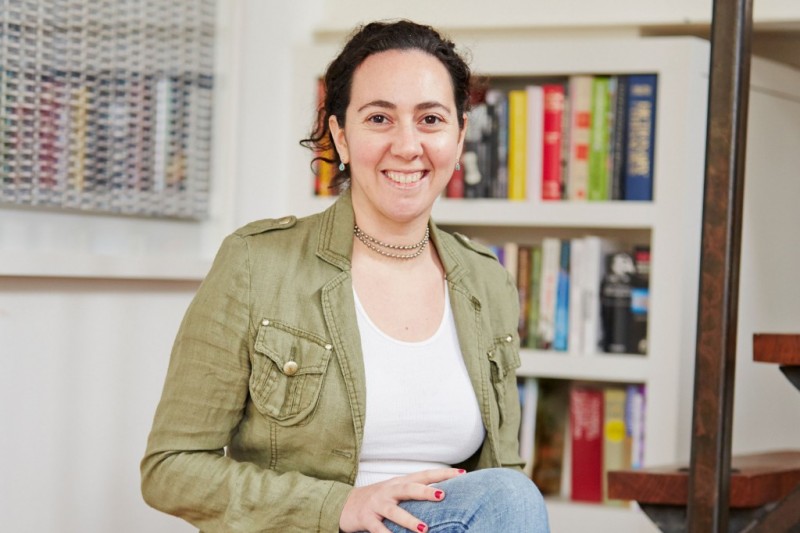
 Children holding RIOTID.
Children holding RIOTID.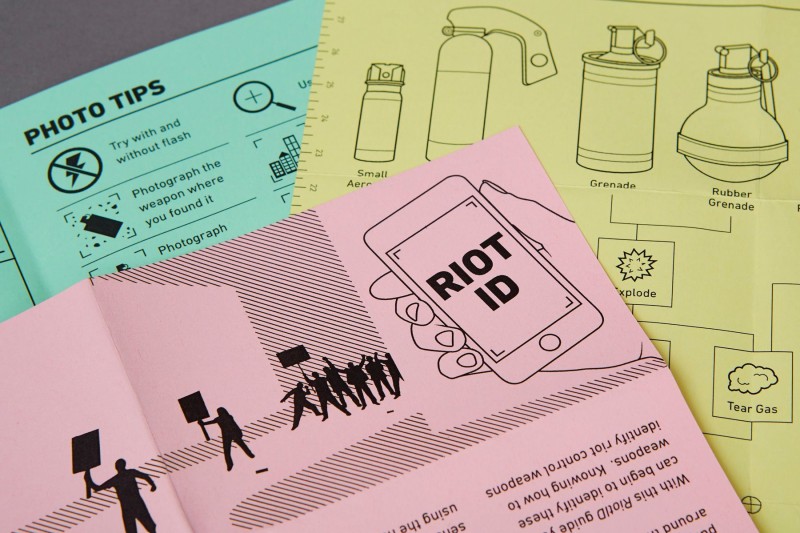 RIOTID guide; source: RIOTID.com
RIOTID guide; source: RIOTID.com
